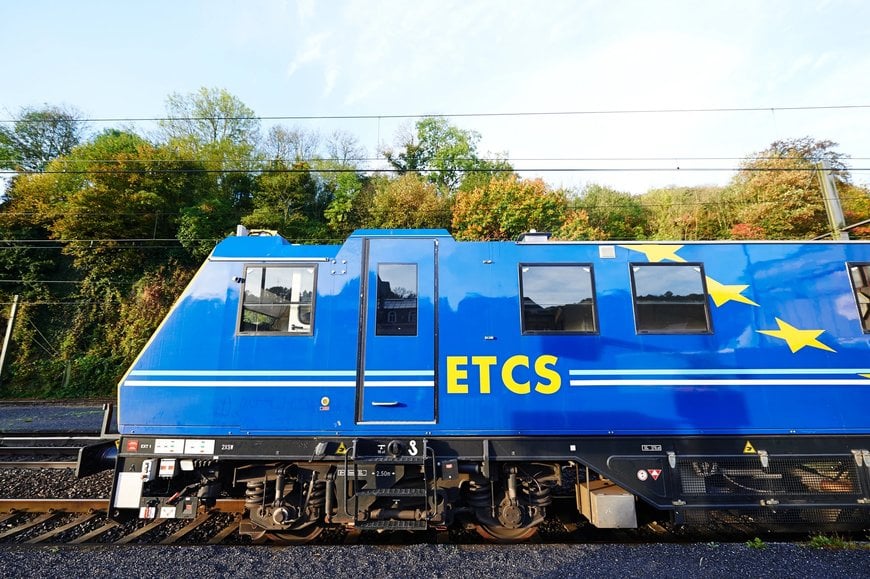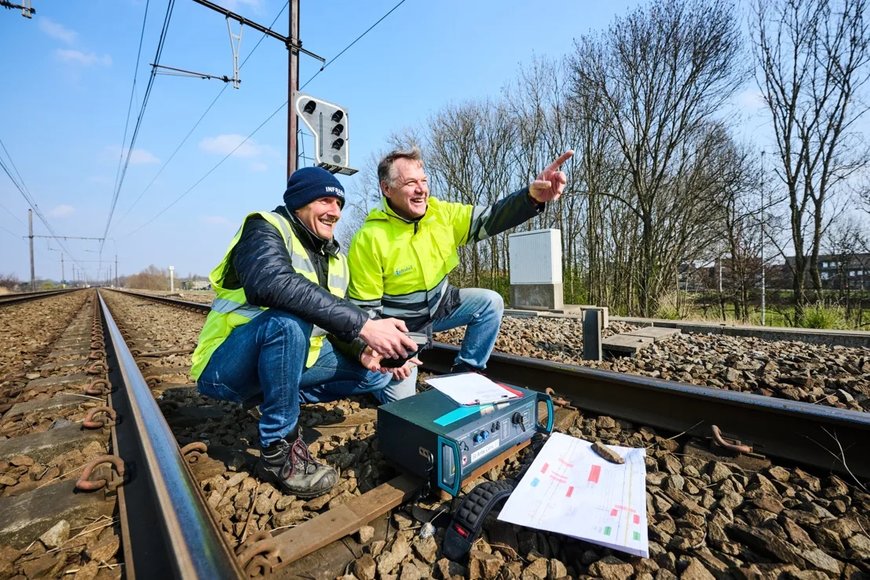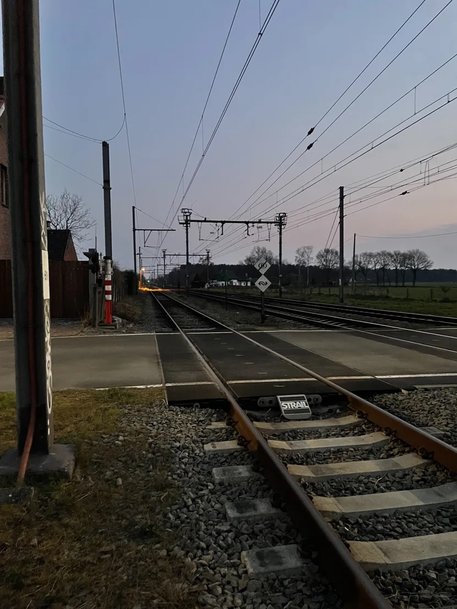Important leap forward for the Belgian rail safety
Last weekend saw a major step forward in rail safety. In just two days, no less than 65 km of track in the province of Antwerp was put in service with the European safety system ETCS (European Train Control System). This automatic system controls the speed of trains.

- 40% of Belgian railways equipped with European safety system ETCS
This greatly reduces the likelihood of a train passing through a red signal. More specifically, these works were carried out on the railway line between Kapellen and the Dutch border and an important freight railway in the port of Antwerp. Both lines are part of three European core network corridors that run through Belgium and must be equipped with the safety system as a priority. By the end of 2025, Infrabel plans to equip its entire rail network with ETCS. The Belgian railway will then be one of the safest in Europe.
Towards one of the safest rail networks in Europe
Infrabel is continuously working on the safety of its rail network. The past weekend of March 19 and 20 was, in terms of the European safety system ETCS, one of the most important weekends of the year. In just two days, an enormous step forward was taken to further improve the safety of the Belgian railways.
Experts from the infrastructure manager have equipped two important railway lines in the province of Antwerp with the European safety system ETCS. Part of the work was carried out on the railway line between Kapellen and Essen (L12). Europe has provided co-financing of up to 0.66 million euros, in addition to the amounts already made available by the federal government for this purpose. The other part to be equipped with the automatic safety system involved a major freight railway in the port of Antwerp (L11). All in all, this equated to about 65 km of track with ETCS. That brings the total to 40% of Belgium's main tracks, around 2,536 km of track, that is now equipped with ETCS.

Cross-border rail safety
Railway line 12 is an important line for both passenger and freight trains between Antwerp and the Dutch border. The line between Antwerp and Kapellen had already been equipped with ETCS. Now, the stretch between Kapellen and Essen has been added. In total, ETCS was put in service on 41 km of track last weekend. This means that the L12 is now fully equipped with the European safety system. Now that this line is fully equipped with ETCS, safety had improved even more. The automatic safety system monitors the speed of trains (if they also have ETCS onboard). When a train travels faster than allowed, an emergency brake is automatically applied. The risk of a train passing through a red signal has therefore been virtually ruled out.
To equip the stretch between Kapellen and the Dutch border with ETCS, Infrabel had to work closely with colleagues at ProRail, the Dutch rail infrastructure manager. In fact, part of the Belgian ETCS installations are on Dutch territory and are also maintained by Infrabel. Clear agreements had to be made in this regard. The cooperation with ProRail went very well.
More safety for important freight line in the port of Antwerp
Railway line 11 is an important freight line in the port of Antwerp. The Antigoon rail tunnel on this line was already equipped with ETCS and an additional 24 km of track with the same safety system has now been added. So from now on, there is a freight connection running from Waaslandhaven on the left bank (Scheldt) to the Antwerpen-Noord marshalling yard on the right bank that is fully equipped with ETCS.The importance of this European security system can hardly be underestimated.
A train incident on February 6, 2020 made this very much clear. Just outside the Antigoon tunnel, a locomotive collided with a freight train. The material damage was extensive and the incident had a severe impact on freight transport in the port. This accident could have been avoided if the line had been equipped with ETCS.

Safe and smooth rail traffic within Europe
Both the L11 and L12 are part of the European network of core network corridors. These are transport axes that must be equipped with ETCS as a European priority. There are nine in total, three of which run on Belgian territory. Our country is centrally located within Europe and its location makes it a logistics hub. Equipping these corridors is not only crucial for rail safety, it is also important to ensure the so-called “interoperability”. This is the ability to run trains smoothly and without problems over the rail networks of several countries. Europe aims to roll out a unified safety system within the European Union. This will ensure that cross-border train traffic will run much smoother in the future.
At the moment, too many member states still have their own, national safety systems. So it happens all too often that a locomotive has to be replaced at the national border with a locomotive that is equipped with the correct safety system that is used in each country. The uniform safety system ETCS should, among other things, put an end to this. Currently, different countries often use other so-called signal images in their communication with train drivers. These images transmit essential information to drivers so that they know whether to stop or let the train run. Imagine if the traffic lights were different throughout Europe. Not obvious for international traffic. ETCS offers a solution here because it translates all these signal images into a uniform communication. The train driver thus receives similar information throughout Europe on a screen in his train about how far and how fast he may travel.
2025
Belgium has an ETCS Master Plan. This plan sets a tight timing for the roll-out of ETCS on the entire Belgian rail network. Infrabel wants to have its entire rail network equipped with the European safety system by the end of 2025. 2022 is an important milestone. By the end of this year, the infrastructure manager aims to have half of its rail network equipped with ETCS.
Benoît Gilson – CEO Infrabel: “"I am proud of our people. It was a great challenge to put these railway lines into service with ETCS. Especially the stretch to the Dutch border. The cooperation with ProRail was top-notch. But also with the Belgian National Safety Authority, ILT, the various rail operators and our suppliers. Special thanks to the federal government and the European Climate & Innovation Executive Agency for their co-financing. Safety is and remains our priority".
www.infrabel.com

